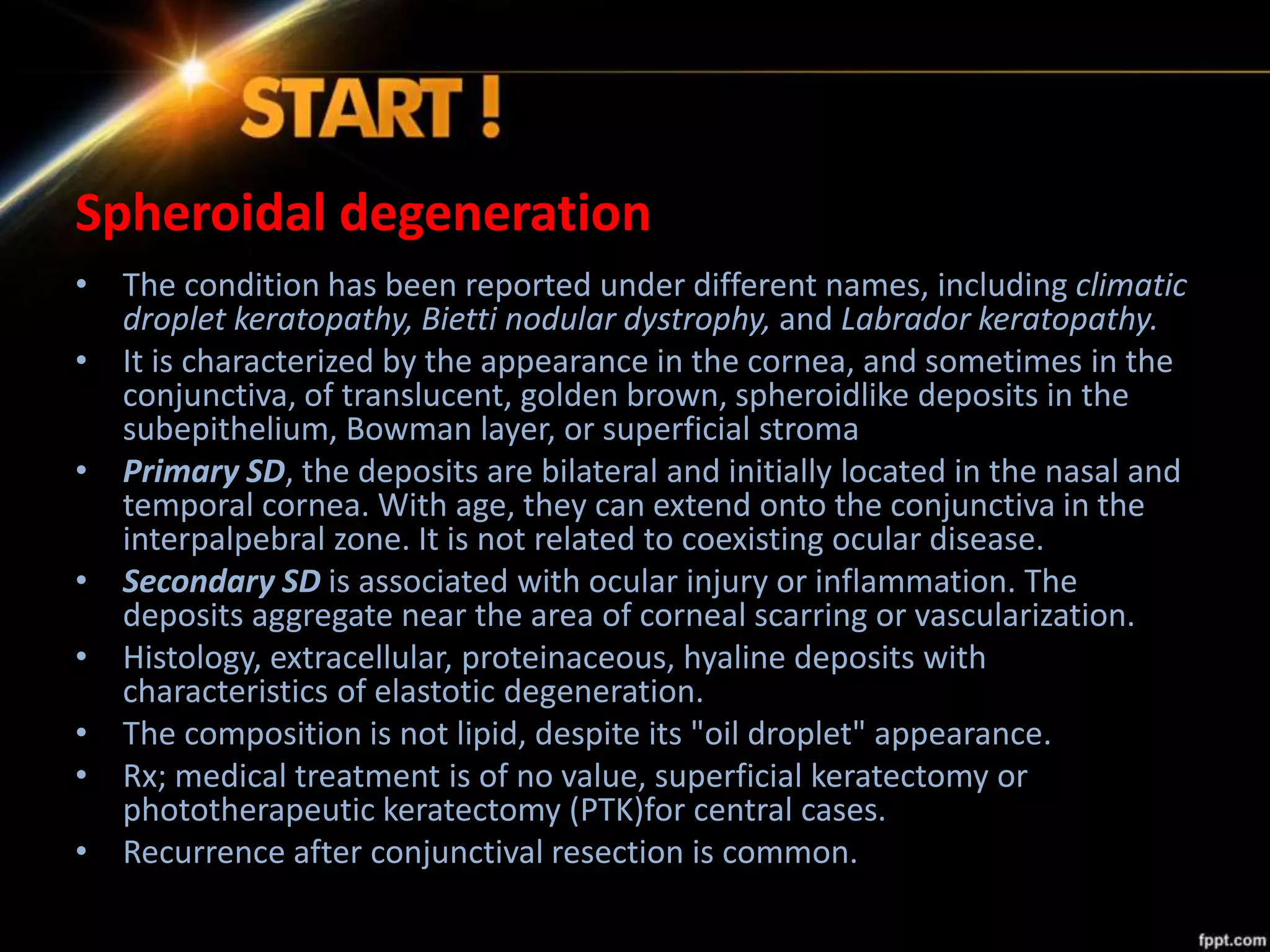This document discusses various types of corneal degeneration and deposition. It begins by defining degeneration as the decomposition and deterioration of tissue, while dystrophies are inherited bilateral conditions with no environmental factors. Several specific degenerations are then described in detail, including Coats white ring, spheroidal degeneration, iron deposition lines, calcific band keratopathy, corneal arcus, limbal girdle of Vogt, crocodile shagreen, cornea farinata, senile furrow, and Salzmann nodular degeneration. For each, the document provides information on presentation, histopathology, associated conditions, and treatment when applicable. The goal is to distinguish different degenerative changes that can






























![Polymorphic amyloid degeneration
• It is a bilaterally symmetric, slowly progressive corneal degeneration that
appears late in life.
• These deposits are usually axial, polymorphic, and filamentous.
• The opacities are gray to white and somewhat refractile but appear
translucent in retroillumination.
• There is also an acquired (secondary localized) corneal amyloidosis, which
may be associated with corneal inflammation (eg, trachoma, leprosy
[Hansen disease], phlyctenulosis) or intraocular disease (eg, uveitis,
retinopathy of prematurity) or may be secondary to trauma.
• Clinically, amyloid deposits in acquired corneal amyloidosis can appear as
raised, yellow-pink nodular masses in the cornea or be nonspecific.](https://image.slidesharecdn.com/cornealdegenerationdepos-180513094651/75/Corneal-degeneration-amp-depos-31-2048.jpg)













